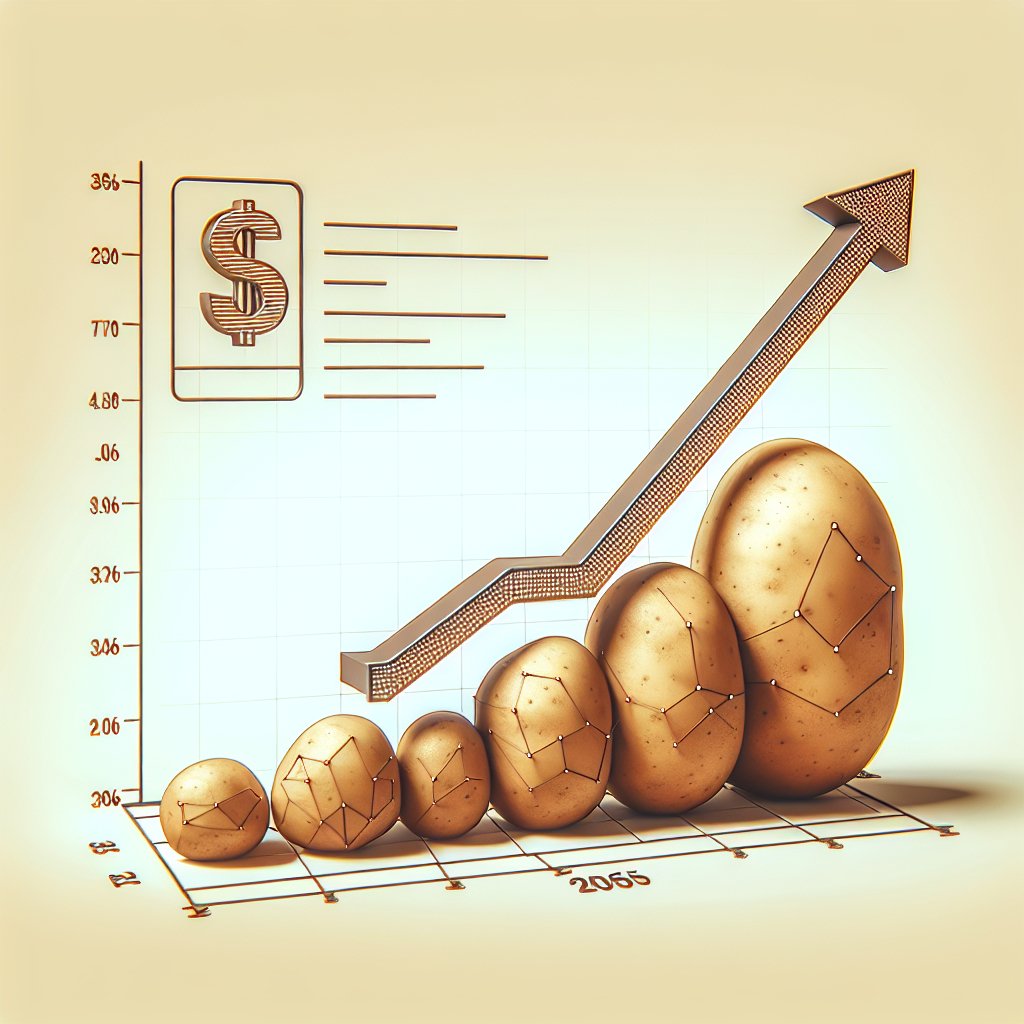The potato market is a vital component of the agricultural sector, influencing food security and economic stability in many regions. As we look ahead to 2024, understanding the price trends of potatoes becomes essential for farmers, traders, and consumers alike. This article delves into the factors affecting potato prices, forecasts for the upcoming year, and the implications for various stakeholders in the agricultural landscape.
Factors Influencing Potato Prices
Several key factors play a significant role in determining the prices of potatoes. These factors can be broadly categorized into environmental, economic, and market dynamics.
Environmental Factors
Weather conditions are one of the most critical environmental factors affecting potato production. Potatoes are sensitive to temperature and moisture levels, and any deviation from optimal conditions can lead to reduced yields. For instance, excessive rainfall can cause waterlogging, while drought conditions can stress the plants, leading to smaller tubers and lower overall production.
- Climate Change: The ongoing impacts of climate change are altering traditional growing seasons and affecting pest and disease patterns. Farmers may need to adapt their practices to cope with these changes, which can influence supply and, consequently, prices.
- Pest and Disease Outbreaks: The presence of pests and diseases can devastate potato crops. For example, late blight, a fungal disease, can lead to significant losses if not managed effectively. The cost of control measures can also affect the overall price of potatoes.
Economic Factors
The economic landscape surrounding potato production is multifaceted. Input costs, market demand, and global trade dynamics all contribute to price fluctuations.
- Input Costs: The prices of fertilizers, seeds, and labor can significantly impact the cost of production. If input costs rise, farmers may pass these costs onto consumers, leading to higher potato prices.
- Market Demand: Consumer preferences play a crucial role in shaping potato prices. The growing trend towards healthy eating and plant-based diets may increase demand for potatoes, particularly for specialty varieties.
- Global Trade: International trade agreements and tariffs can affect the import and export of potatoes. Changes in trade policies can lead to price volatility, especially in regions that rely heavily on potato imports or exports.
Price Forecasts for 2024
As we approach 2024, various market analysts and agricultural experts are making predictions about potato prices based on current trends and anticipated changes in the agricultural landscape.
Supply and Demand Projections
Forecasting supply and demand is crucial for understanding potential price movements. Analysts expect that global potato production will face challenges due to climate variability and rising input costs. However, demand for potatoes is projected to remain strong, particularly in developing countries where potatoes are a staple food.
- Increased Production Costs: With rising costs for fertilizers and labor, many farmers may reduce their planted acreage, leading to a tighter supply in the market.
- Consumer Demand: The demand for processed potato products, such as fries and chips, is expected to grow, particularly in urban areas. This trend may support higher prices for fresh potatoes as well.
Regional Price Variations
Price forecasts can vary significantly by region due to local conditions and market dynamics. In regions with favorable growing conditions and established supply chains, prices may stabilize. Conversely, areas facing production challenges may see more significant price increases.
- North America: In the United States and Canada, potato prices are expected to rise moderately due to increased production costs and steady demand for processed products.
- Europe: European potato prices may experience volatility due to varying weather conditions and the impact of Brexit on trade agreements.
- Asia: In countries like India and China, the growing middle class is likely to drive demand, potentially leading to higher prices as farmers respond to market signals.
Implications for Stakeholders
The anticipated price trends for potatoes in 2024 will have significant implications for various stakeholders in the agricultural sector.
Farmers
For farmers, understanding price trends is essential for making informed planting and marketing decisions. With rising input costs, many may need to adopt more efficient farming practices or diversify their crops to mitigate risks. Additionally, farmers should stay informed about market demands to align their production with consumer preferences.
Consumers
Consumers will also feel the impact of potato price fluctuations. As prices rise, households may need to adjust their budgets or seek alternative food sources. Awareness of seasonal price trends can help consumers make more informed purchasing decisions.
Policy Makers
For policymakers, understanding the dynamics of the potato market is crucial for developing strategies to support farmers and ensure food security. This may involve investing in agricultural research, providing subsidies for input costs, or implementing trade policies that stabilize prices.
Conclusion
The potato market is poised for a dynamic year in 2024, influenced by a myriad of factors ranging from environmental conditions to economic trends. As stakeholders navigate these complexities, staying informed and adaptable will be key to thriving in an ever-evolving agricultural landscape. By understanding the underlying factors that drive potato prices, farmers, consumers, and policymakers can make more informed decisions that contribute to a sustainable and resilient food system.




